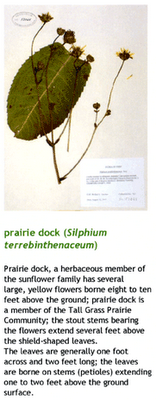A Natural Flats?

As extant maritime and rail dependent industries left Cleveland's Cuyahoga River Valley over the last decades, the image of the densely-built industrial Flats at the height of the machine age has been filed away in digital libraries, local archives, and history books (see the new Images of America publication "Cleveland's Flats".
Interestingly, years of abandonment has provided Mother Nature an opportunity to swallow the scarred valley floor with native shrubs, trees and grasses. Whether the future of the Flats will continue a natural de-volution or develop into a blend of industry, recreation and commerce is still a question - regardless, the few who venture into the valley today notice Nature's reappearance in and around bridges and bricks, gravel piles and river bulkheads.

Cleveland Public Art and Don Harvey recognized the "evolving natural environment in an area of Cleveland commonly thought of as the industrial heart" with the May publication of The Natural Flats: A Field Guide to Habitat in Unexpected Places, a self-guided tour of the Flats' wildlife with images from Harvey and writings from region's naturalists. The Field Guide is available for purchase from CPA and guided walking tours are being given by the Canalway Center of the Cleveland Metroparks.
In the continuing "greening" of the Flats, Mittal Steel recently announced the reintroduction of native plants around its property south of Downtown. Dr. James Bissell, Curator of Botany at the Cleveland Museum of Natural History was hired to oversee the project of green buffer zones along the Cuyahoga River and along property edges. Among the dozen or more plants being tested in the tainted soils are wafer ash, staghorn sumac, prairie dock (shown above) and switchgrass (each illustrated on WCPN's Thursday interview "Adding Green to the Mittal Steel Landscape"). Planting has commenced at the first of three sites, a terraced hill at Independence and New Campbell roads.
Mittal spokesman, Dave Allen, says in Wednesday's PD, "we live in downtown Cleveland and we have a great plant, but it looks like heavy industry. We want to dress it up so it looks like a great plant." Interestingly, this hasn't been the first time Flats industry has polished its look for the public. As related in Images of America, the Cleveland Press sponsored industrial valley tours by bus rides and excursion boats or self-guided car rides in the 1950's. Standard Oil built tourists a model of "number one" refinery and set up an observation porch overlooking its operations, sightseers navigated beside U.S. Steel Company's shipping fleet and tourguides narrated the history of bridges and manufacturing along the route.
Could sightseeing expeditions happen again? Fifty years ago, Clevelanders witnessed an unparalleled dominance in refining and manufacturing. Today, a new story has developed, one which describes a more complete history of growth and decline in Flats' industry, and poses a challenge of Clevelanders to consider new images for the Flats, today and tomorrow.

0 Comments:
Post a Comment
<< Home